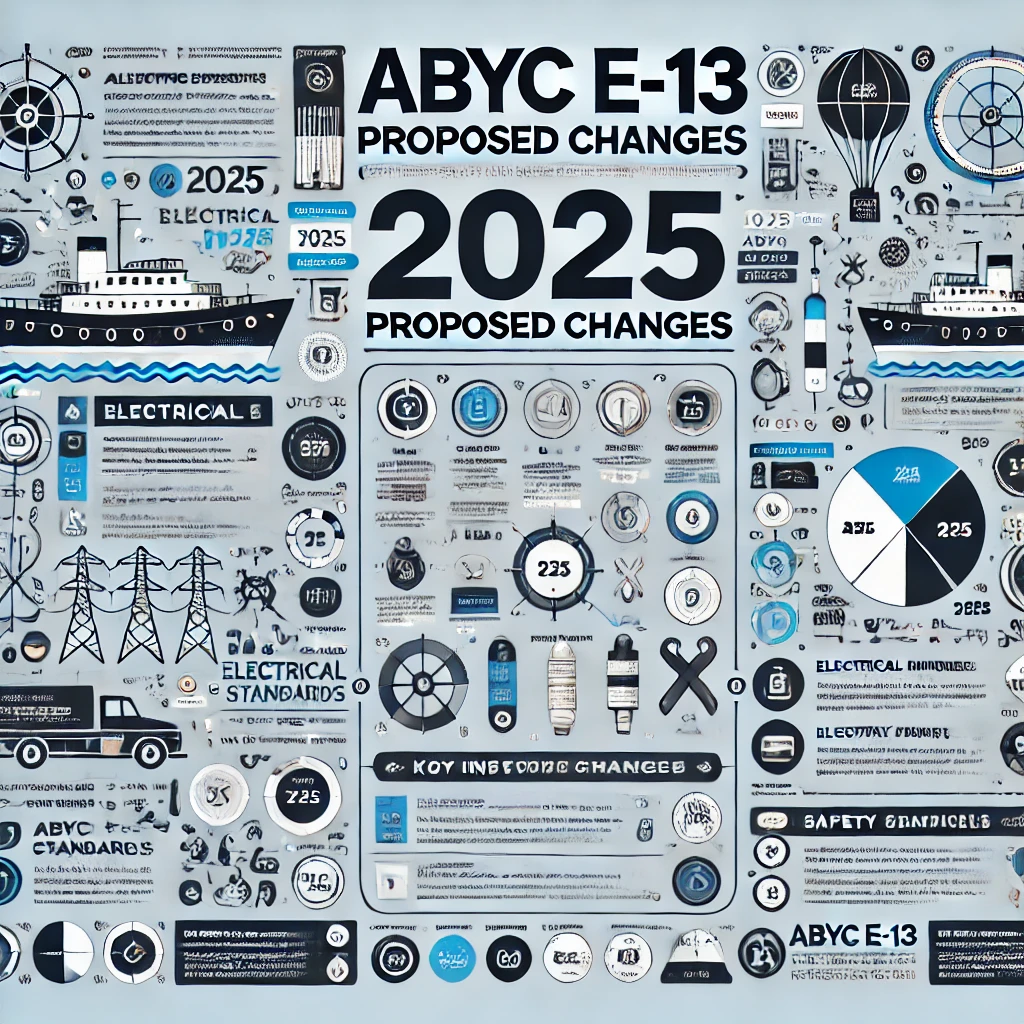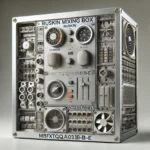The ABYC E-13 changes are basic since they help with making lithium-molecule batteries safer for use on boats. Lithium batteries are extraordinarily notable in the marine world since they are lightweight, continue to go a really long time, and are more useful than standard lead-destructive batteries. Nevertheless, these batteries can be dangerous if not presented and directed suitably. The ABYC E-13 standards were made to guarantee that boat owners notice unequivocal rules for presenting, charging, and staying aware of these batteries safely.
One of the primary reasons these progressions are so significant is that lithium batteries can burst into flames assuming they overheat or are harmed. This hazard is higher on boats in light of the fact that the climate can get warm and wet. The ABYC E-13 principles assist with forestalling these mishaps by ensuring that the batteries are introduced considering security. By keeping these guidelines, boat proprietors can feel more certain that their boats are protected and that the batteries will work appropriately.
The progressions additionally assist with boat protection. Numerous insurance agency currently expect that boats utilizing lithium batteries observe ABYC E-13 guidelines. On the off chance that a boat proprietor doesn’t observe these guidelines, it very well may be more diligently to get or keep protection inclusion.
Key Components of the ABYC E-13 Changes
Installation Guidelines
Appropriate establishment of lithium batteries on boats is vital for wellbeing. The ABYC E-13 principles give clear rules on how and where to introduce lithium-particle batteries. It is critical to ensure the batteries are safely secured so they don’t move during drifting. In the event that a battery moves, it very well may be harmed, making it overheat or breakdown.
As well as getting the battery, it’s critical to have sufficient ventilation around the battery to keep it from getting excessively hot. ABYC E-13 suggests introducing the battery in an area that stays cool and dry, away from dampness or outrageous intensity, which could create issues.
Charging System Requirements
The ABYC E-13 proposed changes likewise remember explicit standards for charging lithium batteries for boats. Charging a lithium-particle battery inappropriately can cause harm and even flames. The charging framework should be intended to match the battery’s necessities. For instance, the voltage and current from the charger should be viable with the battery to forestall cheating.
The ABYC E-13 norms suggest that boat proprietors use chargers with worked in wellbeing highlights like temperature sensors. These elements assist with guaranteeing that the battery is charged securely and doesn’t overheat, which is significant for safeguarding both the battery and the boat.
Battery Management Systems (BMS)
A Battery The executive’s Framework (BMS) is a critical piece of guaranteeing the security of lithium-particle batteries on boats. The BMS helps screen the battery’s well-being, adjust the cells, and forestall cheating or profound releasing. This framework helps the battery last longer and holds it back from turning into a security risk.
The ABYC E-13 changes expect that all lithium-particle batteries have a BMS that gives significant data about the battery’s status. For instance, the BMS can caution the boat proprietor in the event that the battery is getting excessively hot or on the other hand on the off chance that there’s an issue with charging. Having this framework set up is a basic well-being highlight that forestalls mishaps.
Overcurrent Protection
Overcurrent insurance is one more significant wellbeing highlight expected by ABYC E-13. This truly intends that there should be a method for safeguarding the battery from a lot of current coursing through it, which could make it overheat or get harmed. Wires and circuit breakers are frequently utilized for this assurance.
By observing the ABYC E-13 guidelines, boat proprietors will introduce these wellbeing gadgets appropriately to forestall perilous circumstances. This is particularly significant on the grounds that boats have complex electrical frameworks, and a short out or electrical issue can prompt fires or different dangers.
Thermal Management
Lithium-particle batteries produce heat, and dealing with this intensity is fundamental for wellbeing. The ABYC E-13 principles underscore the requirement for warm administration frameworks that keep the battery cool. At the point when a battery overheats, it can prompt warm out of control, an interaction that could make the battery burst into flames or detonate.
To forestall this, the ABYC E-13 rules suggest that boat proprietors use temperature sensors to screen the battery’s temperature. In the event that the battery gets too hot, the framework can consequently close down charging or alert the boat proprietor to make a move. Utilizing cooling frameworks, like fans or extra air dissemination, can assist with keeping the battery at a protected temperature, guaranteeing that the boat stays protected and the battery performs well.
Ensuring Compliance with ABYC E-13
To guarantee consistence with the ABYC E-13 norms, boat proprietors need to make explicit strides. In the first place, they ought to ensure their lithium-particle batteries come from a believed maker that keeps the rules set by ABYC. The batteries ought to meet the necessary wellbeing affirmations, as UL or CE, to guarantee they are worked to the right security norms.
Then, boat proprietors ought to follow the ABYC E-13 establishment rules cautiously. It’s critical to put the batteries in the right areas, secure them appropriately, and guarantee legitimate ventilation. On the off chance that uncertain, it’s dependably smart to talk with a marine electrical technician or an expert who grasps these guidelines.
By keeping these guidelines, boat proprietors can ensure their lithium batteries are protected, proficient, and agreeable with ABYC E-13. Also, working with affirmed experts guarantees that everything is introduced accurately, forestalling any issues down the line.
Also Check : Step-by-Step Guide Convert 1986 E-Z-Go to Solid-State
Challenges and Considerations
While the ABYC E-13 changes are significant for wellbeing, they can accompany difficulties. One of the fundamental difficulties is the expense. Redesigning or introducing another lithium-particle battery framework with ABYC E-13 consistence can be costly. In any case, the expense is many times worth the effort over the long haul since it works on the boat’s wellbeing, execution, and battery duration.
Another test is retrofitting more established boats. Numerous more seasoned vessels were not worked in light of ABYC E-13 norms, so overhauling their electrical frameworks and battery arrangements might require huge work. This could incorporate adding new chargers, further developing ventilation, or introducing a BMS.
In conclusion, boat proprietors should know about what consistence with ABYC E-13 can mean for their protection inclusion. Numerous insurance agency currently expect that boats utilizing lithium batteries fulfill these guidelines. Without consistence, boat proprietors might battle to get the protection they need.
Real-Life Examples and Case Studies
Genuine models show the constructive outcomes of adhering to the ABYC E-13 guidelines. Many boat proprietors have announced that their lithium batteries work better, last longer, and are a lot more secure when introduced and kept up with as per these guidelines. At times, boat proprietors have even seen superior eco-friendliness and better generally speaking execution.
Furthermore, boat producers who take on ABYC E-13 guidelines are acquiring an upper hand. Clients need boats that are protected and solid, and sticking to these guidelines can assist with building entrust with purchasers.
Conclusion
The ABYC E-13 proposed changes are a significant step forward in making lithium-ion batteries safer for use in boats. By observing the new guidelines, boat proprietors can guarantee their vessels are protected, productive, and consistent with industry guidelines. While there are a few difficulties, the advantages of following ABYC E-13 far offset the expenses, particularly with regards to somewhere safe and secure and protection. Boat proprietors who stay informed and work with experts can feel sure that their lithium battery frameworks are good to go.
By ensuring your boat’s lithium batteries meet the ABYC E-13 principles, you can appreciate genuine serenity realizing that your vessel is working securely and proficiently.


